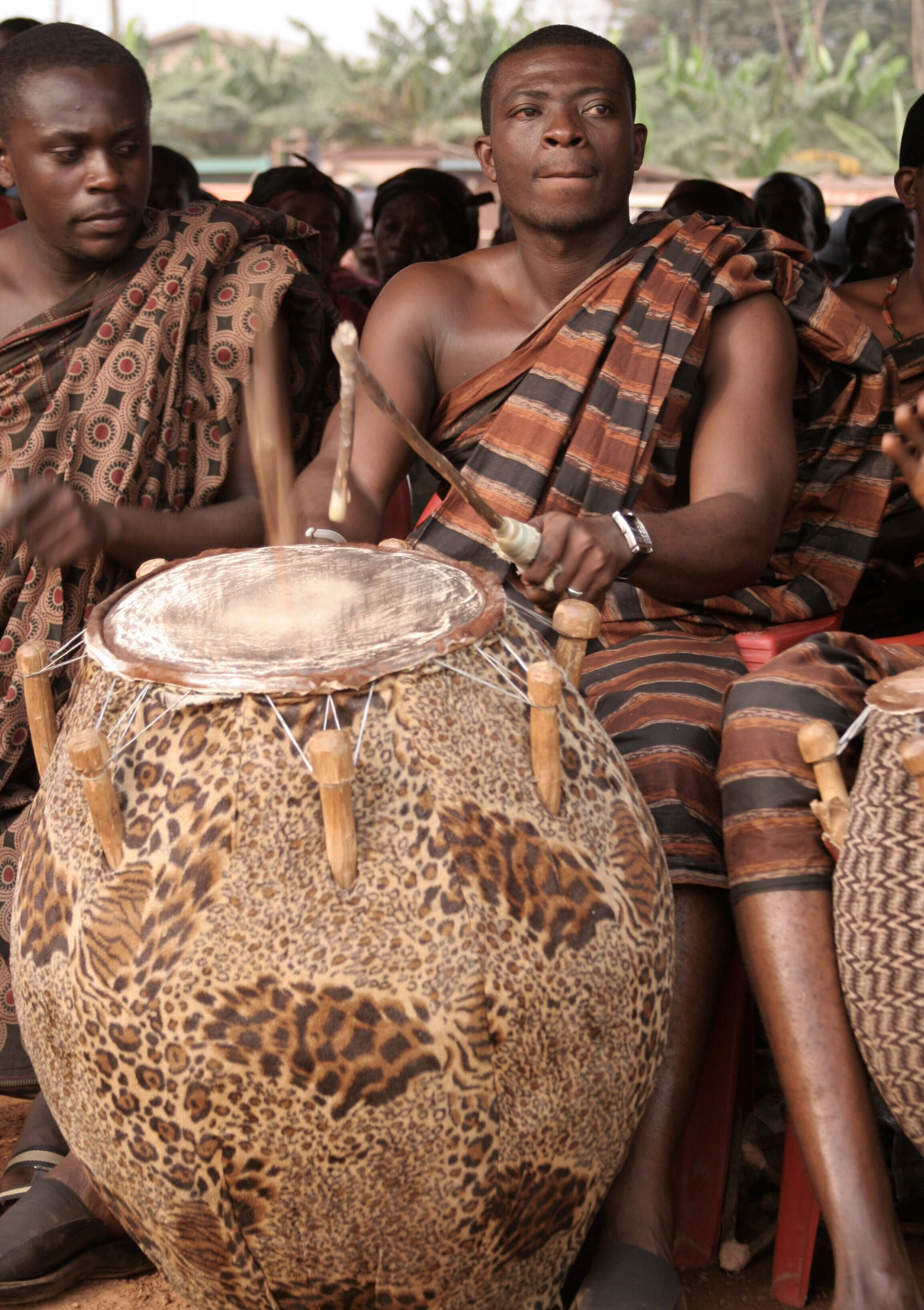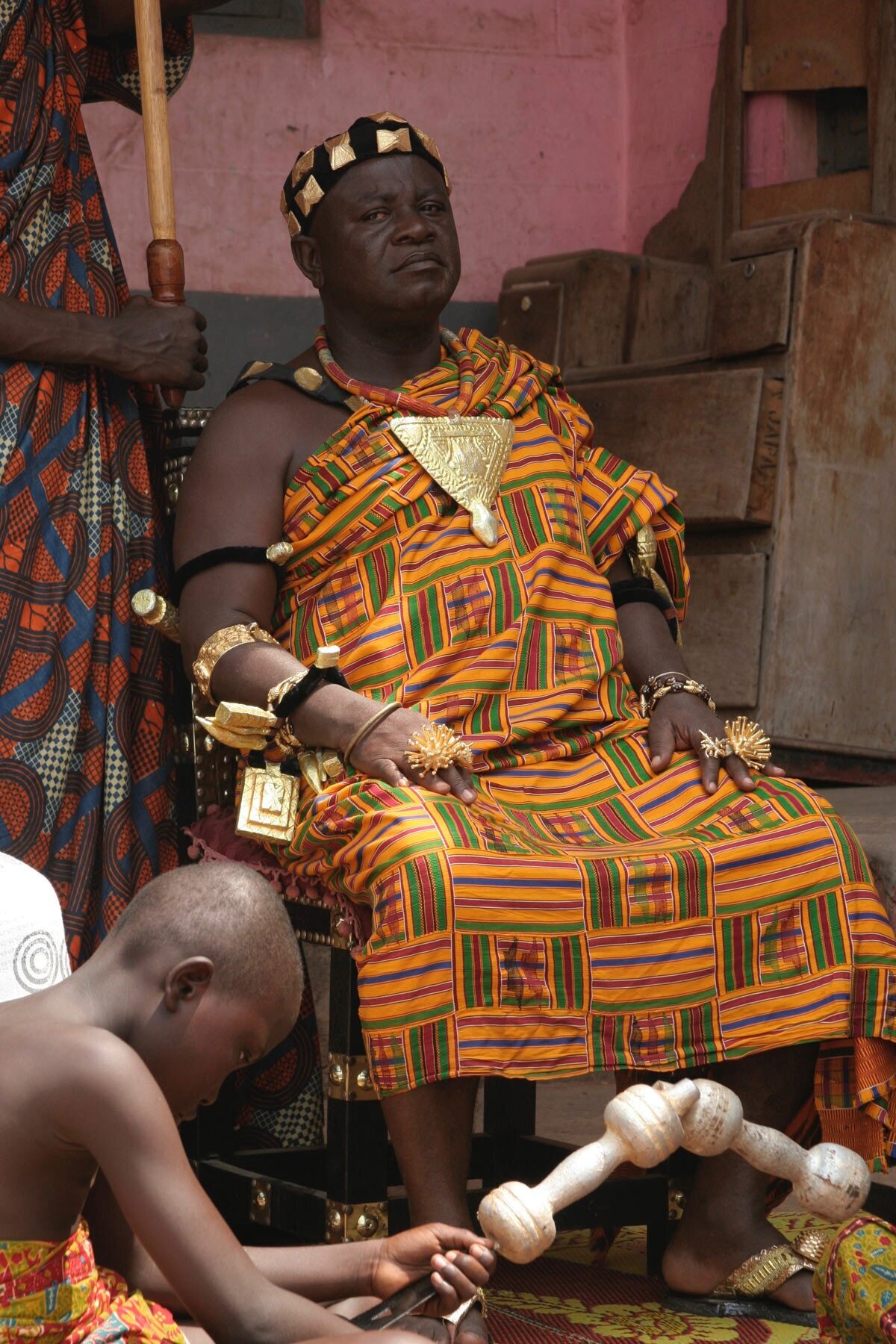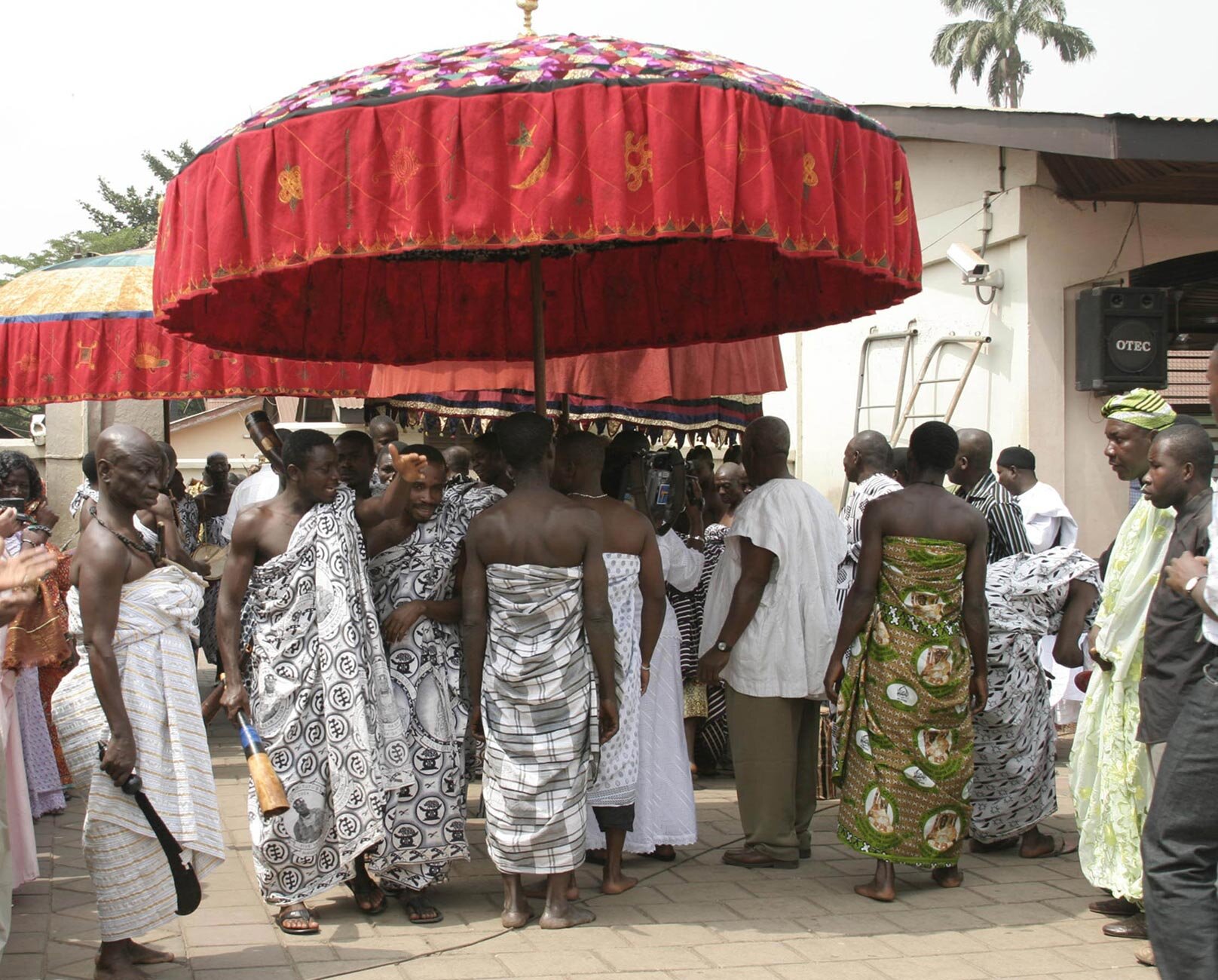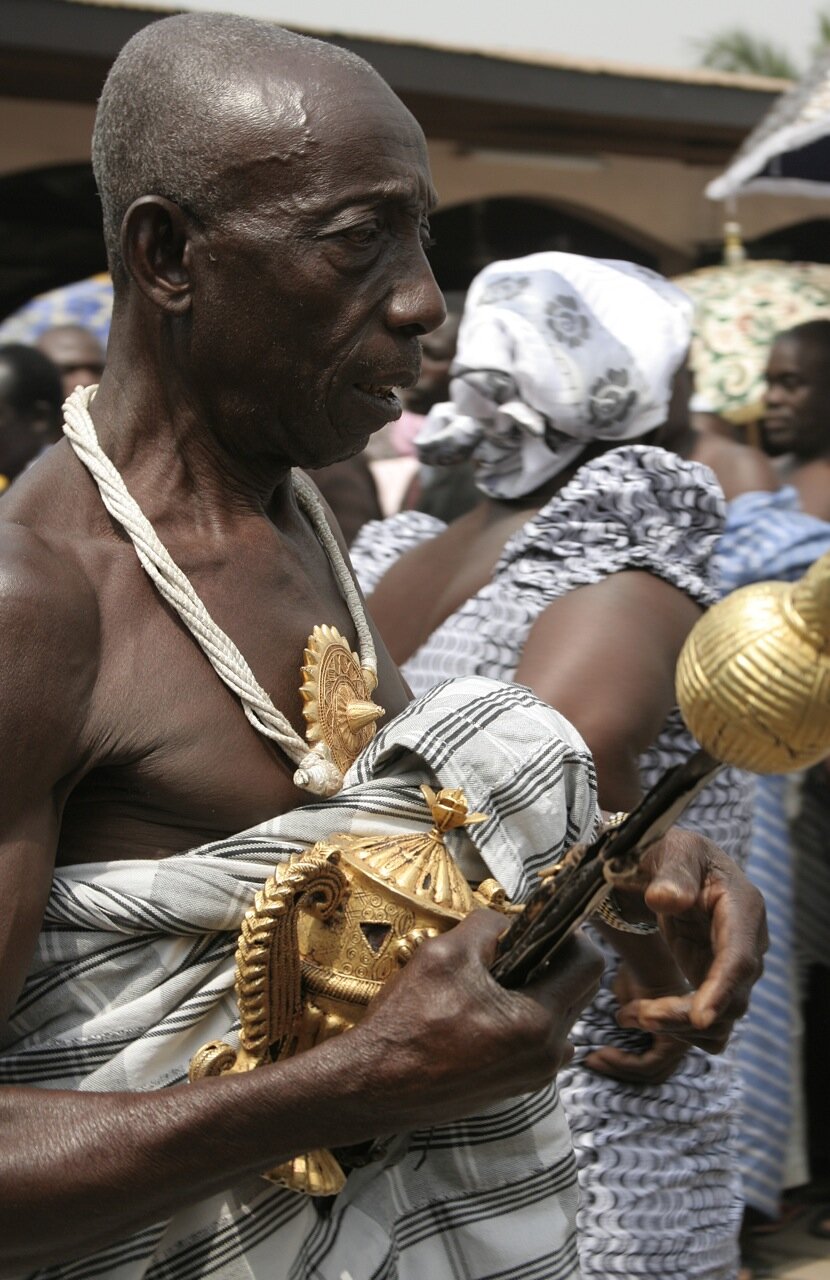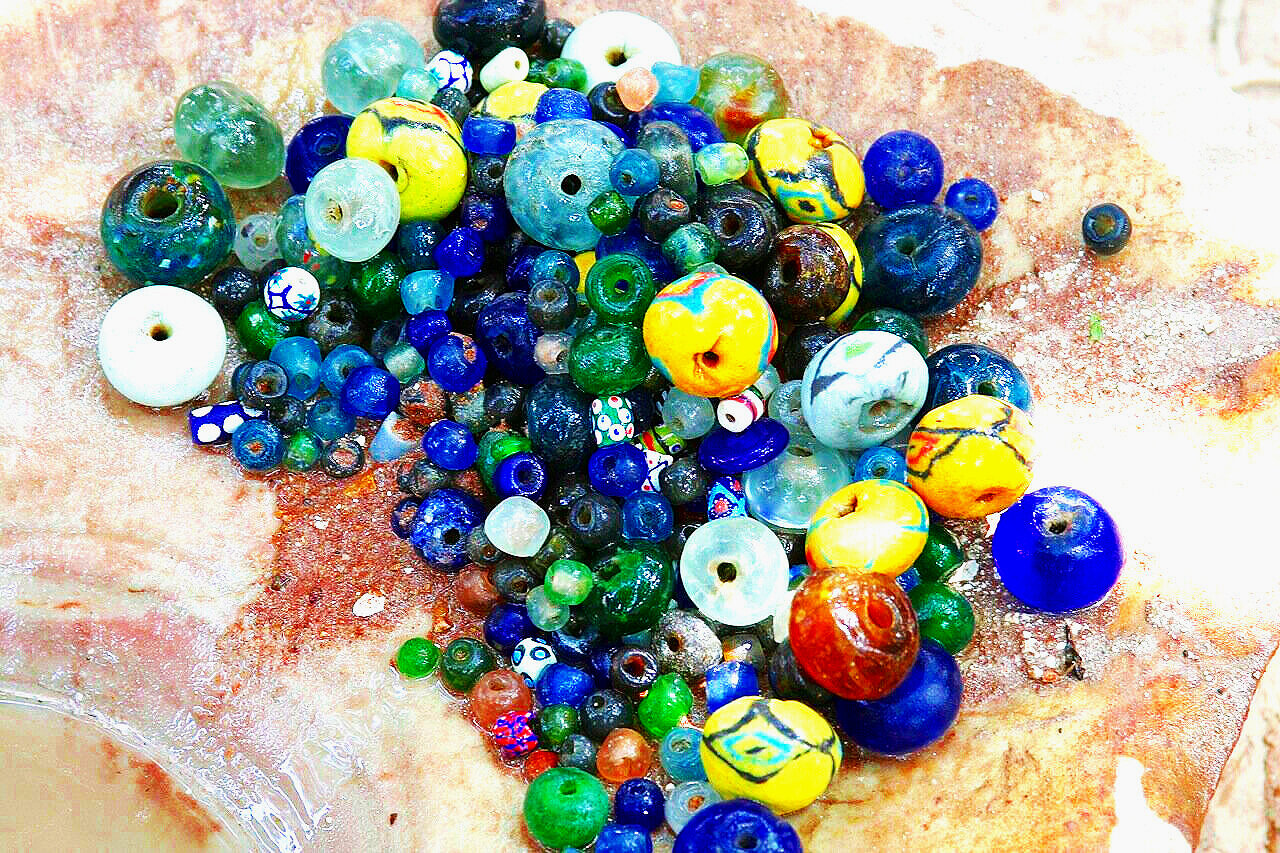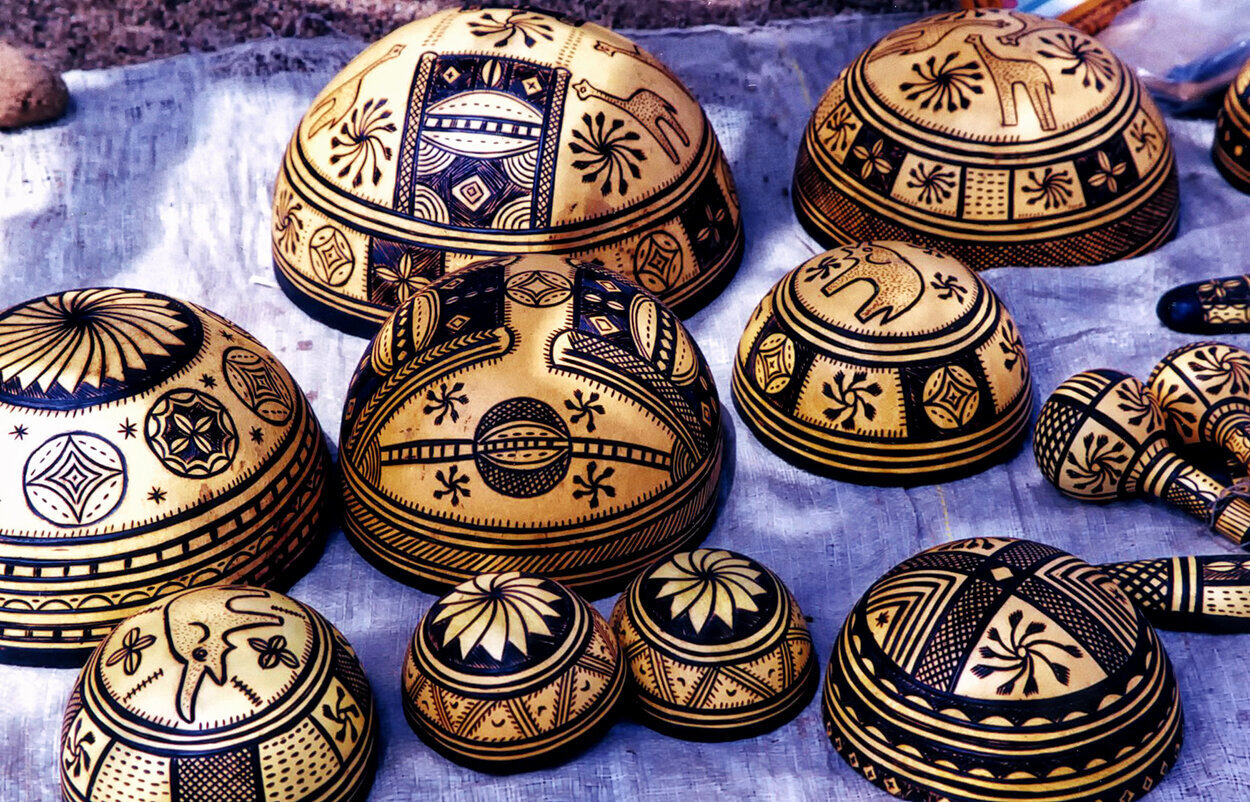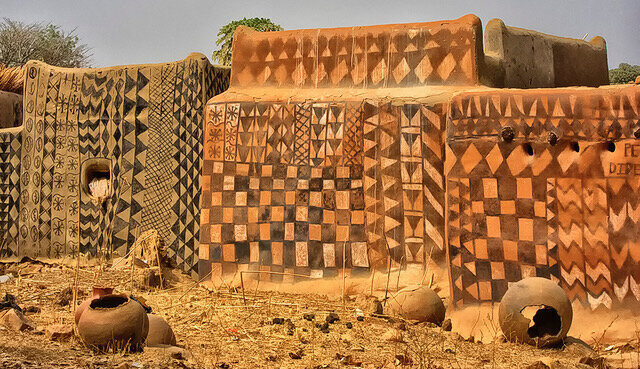
West African Kente Cloth
Journey with a quest: Akwasidae celebration in Kumasi, Ghana, where I saw kente, the cloth of kings
Suddenly, I heard the “talking drum”—its versatile beats carried messages announcing the arrival of the king. The crowd tightened around me, and I was pushed back six feet and could only see the tops of heads. Then, I saw him. Hoisted on a magnificent red palanquin dating back to 1888 and shaded by an immense red parasol, the king was carried by bearers who slowly transported him through the throng of people. His arms adorned with glittering bracelets and starburst rings reflected Ashanti proverbs. His green, gold, and plum silk kente cloth emblazoned with royal motifs was a work of art. He was their king, but to the Ashanti people he was a god.
Standing with thousands of loyal subjects and guests, I was here to attend the Akwasidae celebration in Kumasi, Ghana, honoring the king, his ancestors, and the Golden Stool, the sacred symbol of the power and unity of the Ashanti people, the largest and most powerful of the country’s clans. (The Golden Stool is believed to have been brought down from heaven in the 18th century. It must never touch the ground, and where it’s kept is a closely guarded secret.)
Talking drum
Chief in Kumasi
Chiefs of various subgroups or clans wearing striking black and white silk kente arrived with their own attendants. Each clan, distinguished by their unique dress, jewelry, and attendants in waiting, was accompanied by musicians blowing ivory horns, singers invoking the ancestral spirits, and dancers whirling to the frenzied beat of drums.
In Africa, honoring ancestors is of paramount importance, and a celebration to honor the continuity of the past with the present was the reason I came to Ghana in 2002. I was on a quest to learn more about the Ashanti and their long-standing traditions and artistic expressions.
Musicians blowing ivory horns
Akwasidae celebration procession with red parasols
The royal linguist
Leader of a clan sporting star burst gold ring
Ashanti man wearing contemporary kente cloth
Honored guest wearing black, honoring the royal ancestors of the King
Clan dancers
